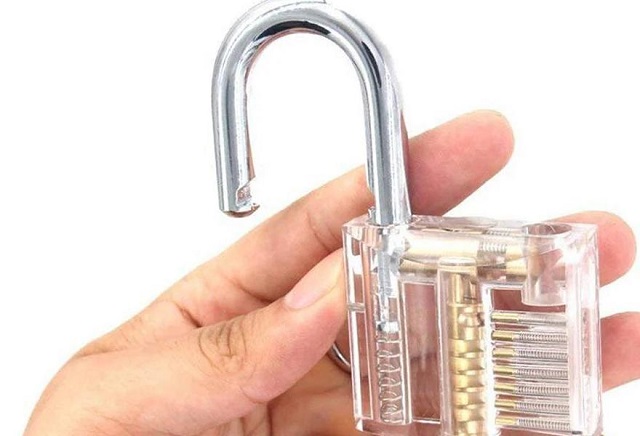Why Transparent Practice Locks Are the Best Choice for Beginners
2024-10-10 14:26

Transparent practice locks are an essential tool for beginners learning the art of lockpicking and locksmithing. They provide a unique learning experience by allowing users to observe the internal mechanisms of a lock in real-time as they manipulate it. This transparency helps learners understand how locks function and how different tools interact with the lock's components. There are several reasons why transparent practice locks are more suitable for beginners compared to traditional locks, making them an invaluable tool for anyone new to the craft.
Visual Learning and Immediate Feedback
One of the primary advantages of transparent practice locks is their ability to offer immediate visual feedback. Beginners often struggle with understanding the complex internal workings of a lock because traditional locks keep everything hidden behind a metal casing. With a transparent lock, the internal pins, springs, and keyway are visible. This allows learners to see exactly how the lock's mechanisms react to their actions, such as applying tension, inserting a pick, or turning the key.
For visual learners, this is a significant benefit. Instead of relying solely on feel and guesswork, beginners can watch as the pins move up and down, learning how to align them correctly to unlock the device. This visual feedback helps build a more intuitive understanding of the process, making it easier for newcomers to grasp the fundamentals of lockpicking.
Understanding Lock Mechanisms
Another reason why transparent practice locks are perfect for beginners is the way they demystify lock mechanisms. Locks can appear highly complex to those unfamiliar with them, and trying to learn how to pick or open them without a clear understanding of their internal workings can be frustrating. Transparent practice locks break down this complexity by offering a clear view of the lock's inner workings.
When learners can see the pins inside the lock, they can understand how different types of locks work, such as pin-tumbler locks or wafer locks. Beginners can observe how the key interacts with the pins and springs, as well as how improper techniques cause the lock to fail. This knowledge builds a strong foundation for more advanced skills, such as tension control, which is crucial for successfully picking more complex locks.
Building Confidence in Early Stages
Learning to pick locks can be a discouraging experience for beginners, especially when progress seems slow or the results are inconsistent. Traditional locks, with their opaque design, offer no clues or insights when an attempt fails, leaving learners guessing about what went wrong. Transparent practice locks, on the other hand, provide visual cues that can help troubleshoot the process.
For example, if a learner applies too much tension or doesn't insert a pick far enough, they can see how the pins fail to set or bind in the lock. This immediate feedback helps them adjust their technique more quickly, reducing frustration and accelerating their progress. As a result, beginners gain confidence as they start to understand what works and what doesn't, ultimately leading to a more rewarding learning experience.
Gradual Skill Development
Transparent practice locks are often designed with varying levels of difficulty, which is ideal for beginners. Some transparent locks may have fewer pins, weaker springs, or looser tolerances, making them easier to manipulate. As learners improve their skills, they can gradually move on to practice locks with more pins, tighter tolerances, or additional security features. This gradual increase in difficulty allows beginners to build their skills incrementally without becoming overwhelmed.
Furthermore, transparent practice locks often come in sets, including different types of locks such as padlocks, cylinder locks, or even combination locks. This variety helps beginners explore different lock types in a controlled environment, broadening their understanding of how different mechanisms work. The ability to practice with a range of locks is crucial for anyone looking to become proficient in lockpicking or locksmithing.
Low Risk of Damage
Beginners are prone to making mistakes when first learning to pick locks, and using standard locks can sometimes lead to damaging the lock or breaking tools. Transparent practice locks are designed to withstand repeated attempts and are typically more forgiving than traditional locks. This durability makes them a safer choice for beginners who are still developing their touch and technique.
Because learners can see exactly how much force is required to set or move the pins in a transparent lock, they are less likely to apply excessive force that could break the lock or the tools they're using. This also reduces the cost of replacing broken equipment, making transparent locks a more economical option for beginners.
Bridging the Gap to Real-World Applications
While transparent practice locks are primarily a learning tool, they help bridge the gap between theory and real-world applications. Once a beginner has mastered picking a transparent lock, they will have a solid understanding of the skills required to tackle traditional locks. The visual and tactile experience gained from transparent locks translates well to picking opaque locks, where only touch and sound are available.
For beginners who aspire to become locksmiths or simply want to develop a hobby in lockpicking, transparent practice locks are an essential first step. They provide a supportive and instructive environment that allows learners to build foundational skills before progressing to more advanced techniques and more challenging locks.
Conclusion
In summary, transparent practice locks are the ideal choice for beginners due to their visual learning benefits, ability to build confidence, and gradual skill progression. By offering immediate feedback and allowing learners to observe lock mechanisms in action, these locks provide a clear path for understanding the fundamentals of lockpicking. With their forgiving nature and incremental difficulty, transparent practice locks ensure that beginners can hone their skills without frustration or damage, ultimately preparing them for real-world lock challenges.
 Promotion: 5% Discount Code: 5vip
Promotion: 5% Discount Code: 5vip